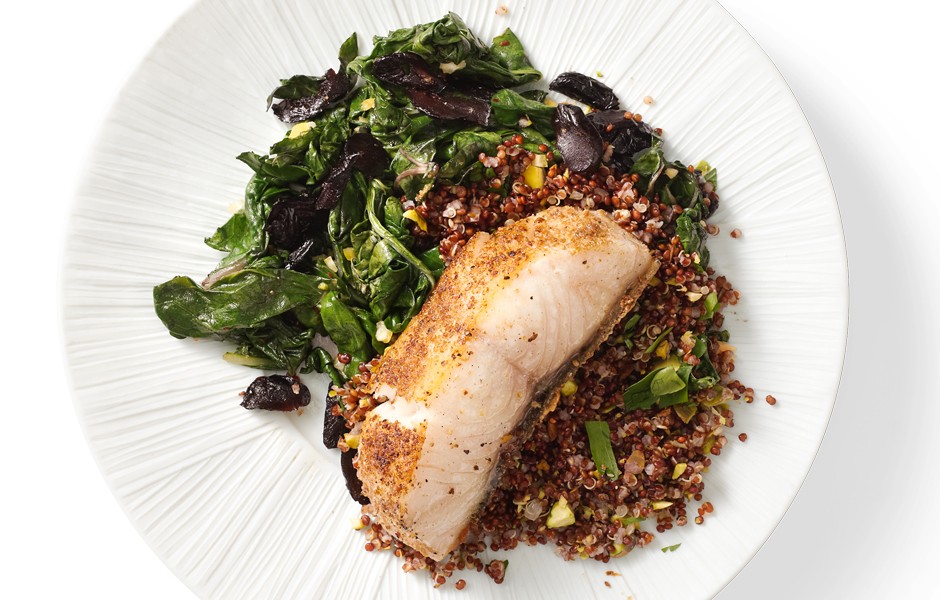Nothing screams summer like sitting outside and enjoying a nice piece of freshly grilled fish or cracking open a steaming Dungeness crab. With summer beginning tomorrow, we have decided to kick off our first ever PDXSeafood Sustainable Seafood Miniseries! In honor of the 13 new Marine Stewardship Council (MSC) certified fish on the U.S. West Coast, this miniseries is going to be focusing on these species as well as other lesser known sustainable seafood options available locally in Oregon. Not only will we be sharing amazing recipes, but also telling the stories of these fish, and informing you on where to buy them!
Before we introduce the first species featured in this miniseries and praise it for its silkiness and rich omega-3 laden fats,  we thought it might be important to first go over what caused these 13 new species to gain the prestigious MSC certification. The West Coast trawl fishery has long been scrutinized for causing habitat damage and massive amounts of bycatch in regions that are home to several vulnerable species. In 2000, the fishery was declared a federal disaster. On June 3rd, 2014 after years of work were dedicated to improving the sustainability of the fishery, it was announced that this had all changed and the fisheries were now doing better at sustainable harvesting.
we thought it might be important to first go over what caused these 13 new species to gain the prestigious MSC certification. The West Coast trawl fishery has long been scrutinized for causing habitat damage and massive amounts of bycatch in regions that are home to several vulnerable species. In 2000, the fishery was declared a federal disaster. On June 3rd, 2014 after years of work were dedicated to improving the sustainability of the fishery, it was announced that this had all changed and the fisheries were now doing better at sustainable harvesting.
The adoption of a catch shares management program has been cited as the key step that led to the rebuilding of fish stocks and reduction of bycatch in the fishery that spans from the very top of Washington all the way to the very bottom of California. While relationships between fishermen and scientists are notoriously dysfunctional, the West Coast trawl fishery is an amazing example of how cooperation in this industry can result in major success for both the fishermen and the fish. A catch shares program is one that directly links the fishermen to the success or failure of a fishery, causing an incentive for long term sustainability. A science-based annual sustainable catch limit for the fishery is determined and then it is broken down into individual quotas that are given to each fisherman allotting how many fish they are allowed to catch each given year.
This catch share program was implemented at the West Coast trawl fishery in 2011 and since then has made sure that fishermen have stayed within the fishery’s sustainable limit, even requiring a federal monitor to be on each vessel in order to make sure each fishermen meets the requirements of the new program. Thanks to the cooperation, dedication, and extraordinary adaptations of the fishermen in this fishery, West Coast consumer’s local, and certifiably sustainable seafood options have dramatically increased.
…………………………………………………………………………………………………………………….

image from www.lotusseafood.com
Among the fish that are newly MSC certified is one that has been referred to as one of the finest in the sea, known for its pearly white meat contrasting with its dark black skin to reveal a flaky, oil rich, and distinctively sweet taste. This fish is known as the sablefish, or more commonly referred to on the west coast as black cod, butterfish, and as gindara when prepared for sushi. Sablefish that are caught wild using pots and bottom longlines in Alaska and in the Canadian Pacific have been MSC certified and labeled as a “Best Choice” option on the Monterey Bay Aquarium’s SeafoodWatch® list for quite some time, but now sablefish caught in waters right off of Oregon are joining them.
Sablefish is a very versatile fish. Its high fat content makes it the perfect fish for smoking and prevents even the newest cook form overcooking it. It is also amazing prepared several other ways including raw, roasted, grilled and poached! Once again the fattiness of the fish proves to be its most enjoyed quality making raw sablefish an amazing and sustainable alternative to fatty tuna or salmon belly sushi. Roasting and grilling the sablefish also highlight the richness of the fish, allowing you to play more with its flavor by accompanying it with distinct ingredients like Meyer lemon and miso.
Bon Appétit offers a simple yet decadent recipe for sablefish that is pan seared and accompanied by swiss chard, olives and lemon making the perfect rich and healthy summer dinner!
Another simple and classic recipe for sablefish that can be used to wow guests or simply to impress your family and yourself is Nobu’s Miso Black Cod. It is one of the most popular items at his world-renowned restaurant Nobu and is easy enough to make at home and fantastic even with those minor cooking mishaps that always seem to occur no matter how hard you try!
Luckily, sablefish is a well known and extremely popular fish making it available at most fish retailers in the Portland area. You can purchase it at retailers like Whole Foods, and Newman’s Fish Market as well as at most local farmers markets through vendors like Linda Brand Crab. Southeast Powell Boulevard is also lined with fish shops that most likely all sell sablefish. If you would rather take the easy route and try it at a restaurant, several local sushi restaurants like Bamboo Sushi, Hokusei Sushi and Yama Sushi & Sake Bar feature it on their menus. While some of the sablefish being sold at these restaurants currently is sourced from Alaska due its previous sustainability status, hopefully with the new MSC certification they will all be switching to locally sourced sablefish!
-Katherine



